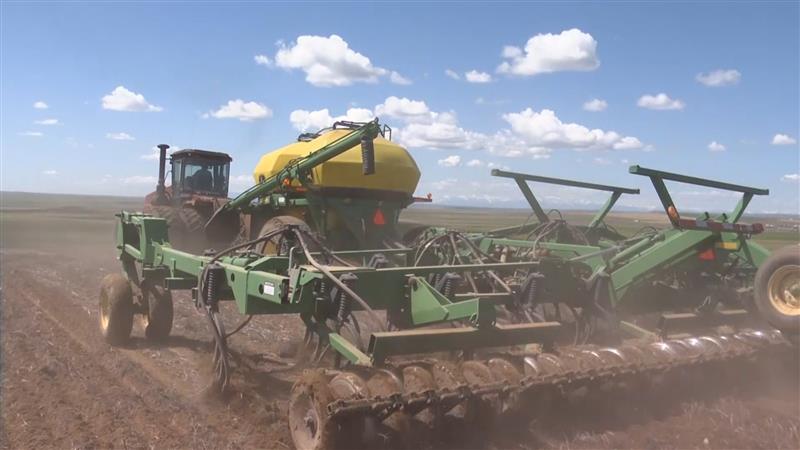Conditions are warming up and allowing fieldwork to finally progress in Montana, and that’s putting a lot smiles on farmers’ faces.
“This is probably the first year we’ve had all the equipment ready before it was time to seed,” said William Downs, a farmer from Molt. “We were waiting on weather pretty much and we were happy to get in the field when we actually could.”
With warmer temperatures finally here and the snow finally gone, farmers like Downs are glad to be back in the fields after this year’s planting delays.
“All together, we’re about a month behind on seeding,” Downs said. “We’re just finishing up our last 10 acres here and then we’ll be done for the year.”
As for the planting progress of other Montana spring wheat growers, the latest USDA crop progress report shows just 24 percent complete, compared to last year’s 44 percent and the 55 percent five-year average.
Downs says even though the seed is in the ground at their farm, there’s a lot of work ahead until harvest.
“We’re just getting started,” said Downs. “Once the seed is in the ground that’s just the first step. The second step is to feed the crop and make sure it has the nutrients it needs to create a good yield for us. And after that, we have to protect it against disease and make sure it’s a healthy plant.”
But even in challenging years like this, Dan Kolar with Northern Seed said today’s research and technology allows companies like theirs to help farmers find a seed variety that fits their operation versus a one size fits all variety.
“There’s different seed varieties out there that fit individual farms across Montana,” said Kolar. “Typically around here, most of our acres are going to be dryland acres so they’re the guys who are going to be using more seed so we have to produce a lot more seed for those guys to plant their farms with.”
Even though wheat prices aren’t where growers would like them to be, Kolar says now is not the time to be cutting back on input costs like treating your seed with a fungicide.
“No, absolutely not. It’s a lot to take in,” he said. “It costs a lot of money to raise a crop but the guys who skimp are the ones who are going to lose.”
Even with this year’s planting delays, farmers like Downs will never turn away moisture.
“We never complain about moisture,” said Downs. “We’ll battle seeding for moisture any day.”
As for this year’s harvest, most of Montana’s winter wheat will be harvested in July and the spring wheat mid to late August because of the planting delays.
Source: MTN & Northern Ag Network


